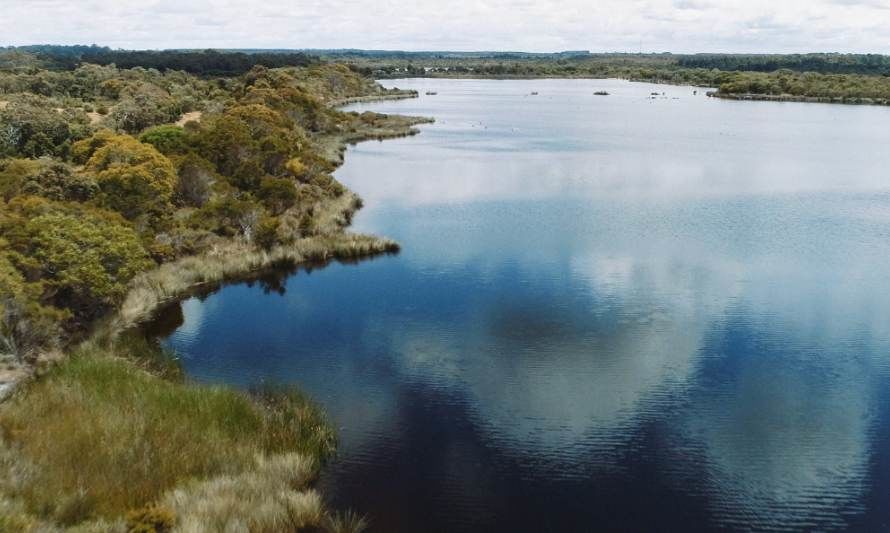
In a first for the mining industry, BHP has completed a pilot case study on the application of natural capital accounting principles in the mining sector.
The mining and metals sector is at the centre of the climate, nature, and energy nexus. The World Bank estimates that production of energy critical minerals is predicted to increase 500 per cent by 2050, to meet the growing demand for clean energy infrastructure, such as wind power and electric vehicles.
The growing need for more minerals and metals requires increased mining activity can lead to pressure on ecological systems and the environmental, social and economic benefits they support. More than half of the world’s economic output – US$44 trillion of economic value generation – is highly or moderately dependent on nature and the biodiversity which underpins our natural systems. Rapid declines in biodiversity therefore represent a significant threat to humanity and economic stability.
One path mining companies can take to better understand and manage their environmental footprint is to measure the extent, condition, and value of natural assets over time using natural capital accounts (NCA). These accounts can help mining companies to better plan, monitor and assess the nature-related outcomes of their actions and identify planning opportunities to contribute towards nature-positive1 outcomes for the world.
In a first for the mining industry, BHP has completed a pilot case study on the application of natural capital accounting principles in the mining sector. The ‘Natural Capital Accounting for the Mining Sector: Beenup Site Pilot Case Study’ (Beenup Case Study), examines the natural capital located at BHP’s rehabilitated Beenup Mineral Sands site in southern Western Australia. A site where BHP continues to manage the ecosystem assets.
Natural capital accounting in the mining sector
The pilot NCA developed as part of the Beenup Case Study compiles information on the extent and condition of the natural assets at the site and identifies the potential to contribute towards ‘nature-positive’ outcomes during and after rehabilitation activities. Using a range of valuation approaches, the financial year 2020/2021 natural capital balance sheet shows, for illustrative purpose only, that Beenup’s restored ecosystems could have an estimated net present value of $30-40 million (AUD).
The annual ecosystem service flows (the relationship between supply and demand on an ecosystem, such as provision of food and water or supporting nutrient cycles and oxygen production) are significantly positive.
For example, the potential annual societal benefits associated with the removal and storage of carbon dioxide at the site (if it were eligible through the current legislative regime and markets) is estimated to be approximately $1 million (AUD) per annum. Because the wetlands at Beenup are constructed systems, the potential of carbon dioxide removal and storage is also increasing over time due to the gradual build-up of organic material located across the surface of the site.
Placing a value on nature is critical to the protection of biodiversity
The Beenup NCA compiles information on changes in the ecological status of the site, including the stock of ecosystems, species and habitats over time and the ecosystem service flows that these asset stocks support. In understanding the stocks of assets that we have under stewardship; we can support improved ecological and socio-economic outcomes.
The BHP Beenup site has already played a role in providing genetic material for a threatened species breeding programme. It is also being used for the translocation of species as part of ongoing recovery plans that are being implemented by the State Government of Western Australia and consideration is being given to the potential to relocate and breed other threatened fauna.
In addition to the ecological outcomes, the wetlands within the Beenup site contribute to improved socio-economic outcomes including the water quality of the nearby Blackwood River and Hardy Inlet, and a range of compatible economic activities including beekeeping and seed collection have been considered based on the NCA information.
Data is key to unlocking successful NCA
One of our key learnings from the pilot study is that having the ‘right’ data is important.
Some aspects of natural capital reporting already occur via operational and financial reporting in the mining sector such as amounts and changes of the non-renewable mineral resource and reserves. However, BHP’s research efforts demonstrate that renewable natural assets (natural elements that can be regenerated or replaced when consumed at a location) can be and should be included in NCA.
A renewable asset might refer to natural elements located on a site, such as water, minerals, energy, timber or fish that will renew when exploited. Think of harvested fish stocks, solar energy, depleted water bodies or polluted air which can withstand exploitation / pressures (up to a point) and return to good ecological status if allowed to fully renew (hence the term renewable resources).
The Beenup site is in a global biodiversity hotspot surrounded by a national park and two sensitive receiving catchments (Blackwood River and Scott River) and so a high-intensity monitoring and data acquisition program for the mine was required to be implemented by the regulator during its operation. Combined with a thorough understanding of the risks associated with the mine, additional studies were commissioned which provided data that would normally be excluded from typical operational reporting.
Mining monitoring programs and datasets on renewable resources have been driven historically by environmental approval and regulatory reporting requirements. For successful environmental stewardship in the future, mining companies would need to review current programs to ensure data capture is appropriate for the development and use of NCA. As the industry develops more holistic monitoring and data collection, modern techniques such as satellite imagery, aerial photography and drone surveys will be increasingly useful.
Supporting societal, ecological and economic prosperity with natural capital accounts
While there is still a significant challenge ahead in developing consistent and comparable corporate natural capital accounts, the Beenup Case Study presents an opportunity to start a conversation about the benefits of NCA in the mining sector and beyond. This conversation will become more important as companies increasingly disclose nature-related impact and dependency information aligned with initiatives such as the Global Biodiversity Framework2 and the Taskforce on Nature-related Financial Disclosures (TNFD) Framework. The intention of NCA is not to commodify or put a price on nature so that it can be bought and sold, but rather to recognise its societal and economic value so that companies can better recognise this is decision making and reporting.
Tools such as NCA are one of the enablers companies and countries that manage large portfolios of natural assets need for better decision making if society is to halt and reverse current trends in nature loss by 2030 and manage environmental impacts during the rapid increase in minerals extraction to support the energy transition.
Source:




